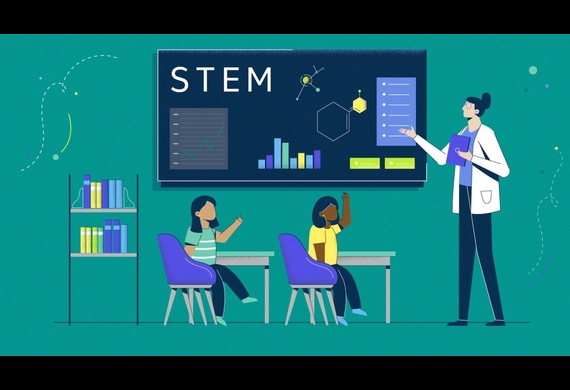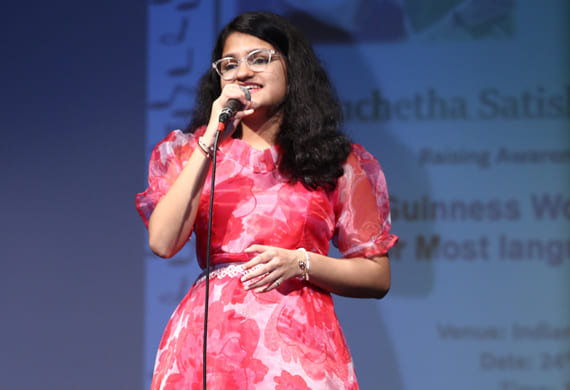
Where do Women Stand in STEM Discipline
By: Sruthi, Writer, WomenEntrepreneurIndia
India is home to one of the largest numbers of scientists and engineers in the world. Women have contributed significantly to science and mathematics in India, including Rukhmabai (India's first practicing female doctor), Janaki Ammal (Master of Botany, 1925), Asima Chatterjee (Doctor of Organic Chemistry, 1944), Kamla Sohonie (Doctor of Biochemistry, 1939), and Rajeshwari Chatterji (Engineering, 1943). The abbreviation STEM was established in 2001 by scientists at the National Science Foundation in the United States (NSF). Previously, the organisation used the abbreviation SMET to designate to career fields in those disciplines or a curriculum that combined knowledge and talents from those professions. It is an interdisciplinary and applied curriculum based on the idea of educating students in four specialised fields: science, technology, engineering, and mathematics.
The National Science Foundation estimates that 80 per cent of jobs created in the next decade will require math and science skills. STEM education produces critical thinkers, problem solvers, and next-generation innovators.
Women Participation in STEM
Despite the numerous benefits of STEM (Science, Technology, Engineering, and Mathematics), women in India are reticent about pursuing science and technology as a career. Women make up approximately 43% of STEM graduates in India, the highest proportion in the world, but only 14% of STEM occupations.
The proportion of individuals who go on to work in STEM professions has always been the key focus in Indian STEM, rather than the number of women graduates. Science and technology (S&T) have saturated the economic sector, and institutions are structured in such a way that S&T might become a social changemaker by introducing flexible work hours and gender-neutral remuneration to encourage women to pursue careers in STEM. Women's socioeconomic status in society will improve as a result of increased participation in the tech industry, allowing women to become more powerful and influential.
Reason for Low Participation
The "double-burden syndrome," which causes women to leave their jobs in the middle of their careers, especially in technical sectors, is still a serious issue in India and must be addressed sooner rather than later. Women are underrepresented in STEM professions due to a lack of skills as well as traditional gender roles that have been allocated to them. There are patriarchal perspectives when it comes to recruitment strategies or awarding fellowships and grants. According to a Kelly Global Workforce Insights (KGWI) poll on women in STEM (Science, Technology, Engineering, and Mathematics), women in India leave the workforce at critical junctures in their careers, particularly during childbearing years and subsequently in mid-management.
Organizations & Initiatives to Promote Women Participation
- Olay & LEAD
Olay, a well-known skincare company, believes that the world needs more women in STEM fields and that India's STEM gender gap must be bridged. As a science brand and a proudly female brand, Olay believes that the world needs more women in STEM and that it is time to address the STEM gender gap equation in India.
As a result of societal restraints and traditional gender roles, women are categorised as caregivers or homemakers, and female fields of study include teaching, nursing, fine arts, and home economics, among others. That is why Olay launched the 'STEM The Gap' project, which encourages more Indian women to pursue STEM education and careers without hesitation. Olay has teamed up with LEAD, India's premier school education technology business, to create a STEM scholarship programme for female students.
- Vigyan Jyoti Scheme:
The Department of Science and Technology (DST) introduced the Vijay Jyoti Scheme. Its goal is to level the playing field for deserving high school girls who aspire to pursue courses in science, technology, engineering, and mathematics (STEM). It also exposes female students from rural places, allowing them to plan their path from school to a career in the science of their choice.
- University of Manchester
The University of Manchester has awarded five British Council scholarships to female master's degree students from India in science, technology, engineering, and mathematics (STEM). The fully-funded scholarships will cover full tuition as well as the majority of the costs associated with studying overseas, including flights, visas, and a monthly stipend, with allowances made for accompanying children.
Initiative to Honour Role Models of STEM
The Government of India and the British High Commission in New Delhi launched the "She Is" book series to honour the top 75 Indian women in science, technology, engineering, applied arts, and mathematics.
On November 25, 2021, British High Commissioner Alex Ellis released the first edition of "She Is": Stories of Women Advancing the Sustainable Development Goals in India. In March, the second edition was announced.
The book series' purpose is to showcase more female role models for young people, to promote women's leadership, and to inspire interest in the SDGs.
A few prominent women leaders are:
Dr. Rakhi Chaturvedi: She is a professor and the Head of the Department of Biosciences and Bioengineering at IIT Guwahati. She has won numerous scientific honours in recognition of her contributions to plant cell tissue culture and agrobiotechnology research.
Preeti Aghalayam, Ligy Philip, Nandita DasGupta: They are lecturers at IIT Madras.
Dr Geeta Rai: She is a member of Banaras Hindu University's Department of Molecular and Human Genetics.
Dr. Arti Kashyap: She is an associate professor at IIT Mandi and one of the faculty mentors for IIT Mandi Catalyst incubators.
Dr. Upasana Ray: She works as a virologist and as a Senior Scientist at the CSIR-Indian Institute of Chemical Biology in Kolkata.
Dr. Darshana Joshi: She is the founder of Vigyanshaala and an experimental physicist. She was an electrician's daughter who went to Cambridge, became an experimental physicist, and then founded Vigyanshaala International, which delivers superior STEM skills to youngsters.
Kiran Manral: She is a Mumbai-based Indian author. Her debut work, 'The Reluctant Detective,' was published in 2011.
In Conclusion
Women's underrepresentation in STEM disciplines must be addressed on two levels: socioculturally, which will take time, and legislatively and institutionally, which may be adopted right away.
To overcome the ongoing gender disparities in STEM majors, immediate investments in supporting infrastructure, motivating institutions to promote gender equity, transparency in decision-making, and other measures are required.
The first step would be for schools to break down 'gender-based perceptions of intelligence', encouraging girls not only to study science in secondary and higher secondary school, but also to pursue STEM-related careers. By encouraging women to pursue their dreams, science as a whole would benefit from a variety of viewpoints.
While the situation is undoubtedly improving, as evidenced by the increase in the number of women in STEM, the road ahead is still lengthy. We've got a long way to go.






